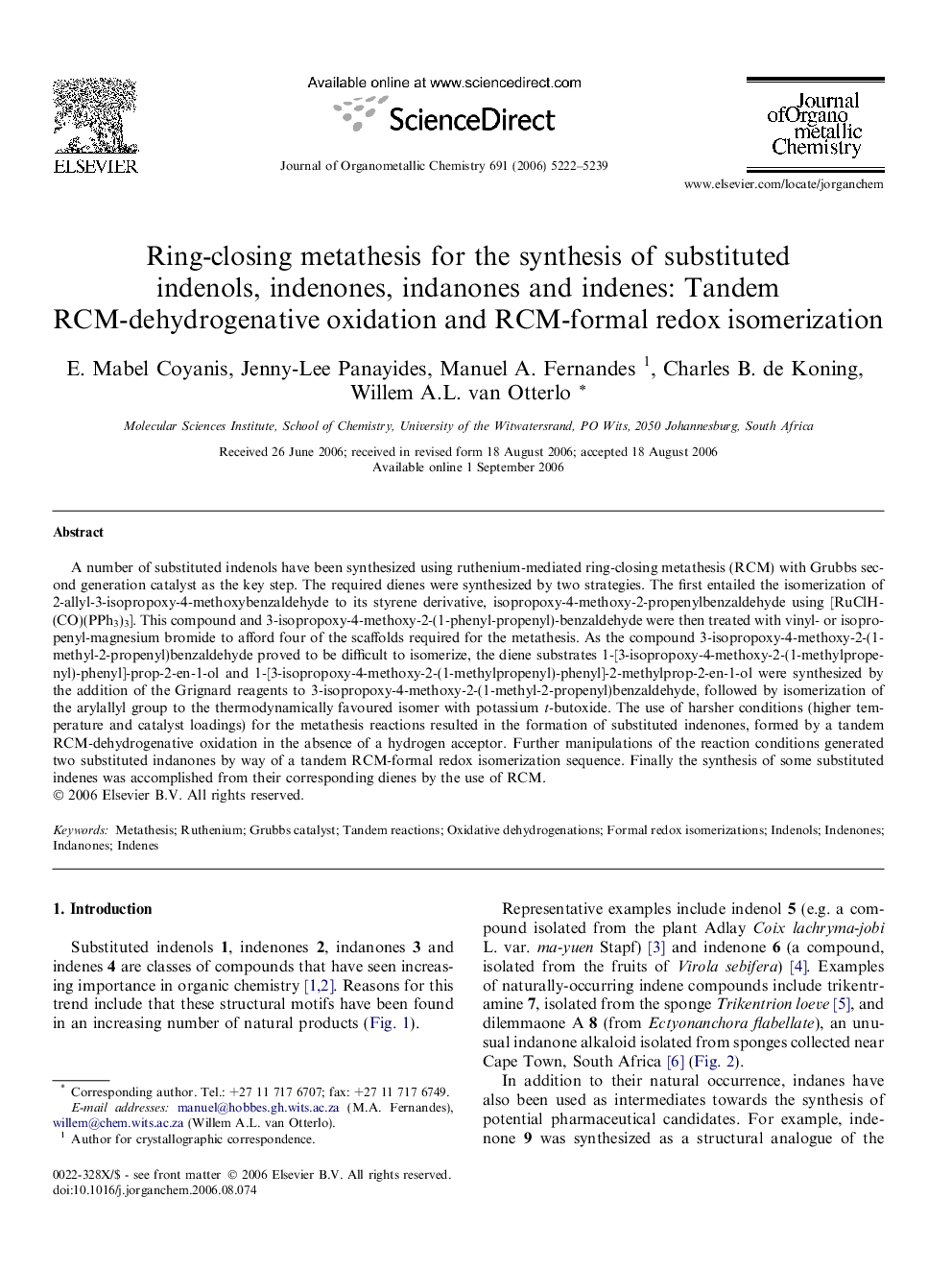| کد مقاله | کد نشریه | سال انتشار | مقاله انگلیسی | نسخه تمام متن |
|---|---|---|---|---|
| 1323743 | 1499950 | 2006 | 18 صفحه PDF | دانلود رایگان |

A number of substituted indenols have been synthesized using ruthenium-mediated ring-closing metathesis (RCM) with Grubbs second generation catalyst as the key step. The required dienes were synthesized by two strategies. The first entailed the isomerization of 2-allyl-3-isopropoxy-4-methoxybenzaldehyde to its styrene derivative, isopropoxy-4-methoxy-2-propenylbenzaldehyde using [RuClH(CO)(PPh3)3]. This compound and 3-isopropoxy-4-methoxy-2-(1-phenyl-propenyl)-benzaldehyde were then treated with vinyl- or isopropenyl-magnesium bromide to afford four of the scaffolds required for the metathesis. As the compound 3-isopropoxy-4-methoxy-2-(1-methyl-2-propenyl)benzaldehyde proved to be difficult to isomerize, the diene substrates 1-[3-isopropoxy-4-methoxy-2-(1-methylpropenyl)-phenyl]-prop-2-en-1-ol and 1-[3-isopropoxy-4-methoxy-2-(1-methylpropenyl)-phenyl]-2-methylprop-2-en-1-ol were synthesized by the addition of the Grignard reagents to 3-isopropoxy-4-methoxy-2-(1-methyl-2-propenyl)benzaldehyde, followed by isomerization of the arylallyl group to the thermodynamically favoured isomer with potassium t-butoxide. The use of harsher conditions (higher temperature and catalyst loadings) for the metathesis reactions resulted in the formation of substituted indenones, formed by a tandem RCM-dehydrogenative oxidation in the absence of a hydrogen acceptor. Further manipulations of the reaction conditions generated two substituted indanones by way of a tandem RCM-formal redox isomerization sequence. Finally the synthesis of some substituted indenes was accomplished from their corresponding dienes by the use of RCM.
Grubbs second generation catalyst converts substituted 1-(2-propenylphenyl)prop-2-en-1-ols into substituted indenols, indenones or indanones depending on the reaction conditions employed. The formation of the indenones represents one of the first examples of a tandem ruthenium-mediated ring-closing metathesis (RCM)-dehydrogenative oxidation reaction whilst the formation of the indanones is proposed to be by way of a RCM-formal redox isomerization sequence.Figure optionsDownload as PowerPoint slide
Journal: Journal of Organometallic Chemistry - Volume 691, Issues 24–25, 1 December 2006, Pages 5222–5239